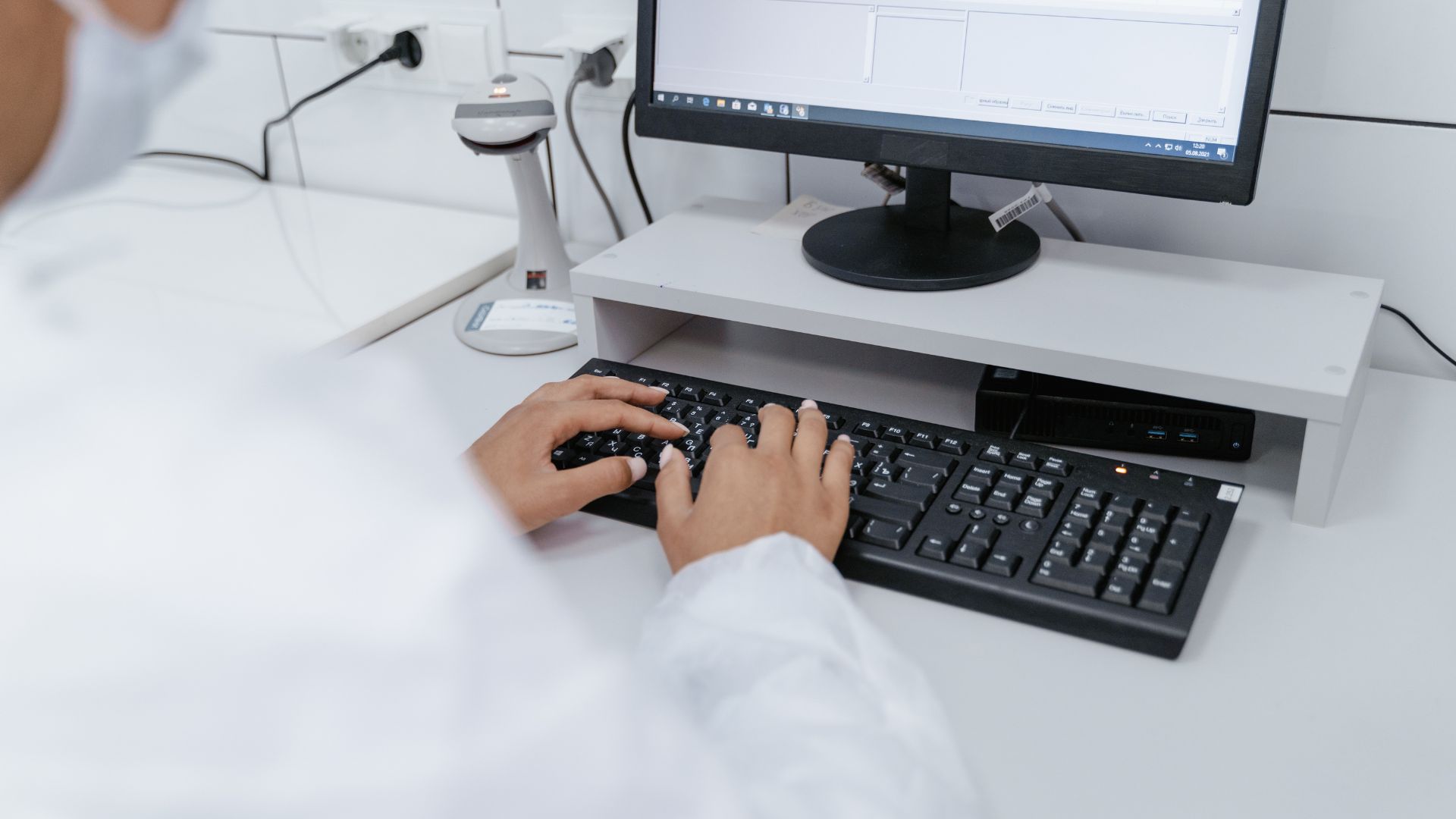Long COVID is a chronic state that can be diagnosed when symptoms or diagnosable conditions persist for at least three months following a SARS-CoV-2 infection. It falls under a broader category known as post-acute sequelae of SARS-CoV-2 infection (PASC) and is recognized as a newly emerging infection-associated chronic condition (IACC).
What makes Long COVID particularly complex is its variability. Symptoms can be continuous, relapsing and remitting, or progressively worsen over time. While it’s more frequently observed in patients who experienced severe COVID-19, the highest overall burden is seen in individuals with mild to moderate cases.
The term “Long COVID” is widely embraced by the patient community and often refers to ongoing, unexplained symptoms that follow the initial infection. Clinicians sometimes use a more structured framework, grouping Long COVID under PASC, which includes post-hospitalization syndromes, new or worsened health conditions, and persistent, unexplained symptoms. In this context, “Long COVID” may be used specifically to describe those unexplained, lingering symptoms.
It’s important to note that there is currently no universally agreed-upon definition of Long COVID. As research evolves, so will the clinical understanding and terminology surrounding this condition.
Exploring the Wide Range of Long COVID Symptoms
Long COVID presents with a wide spectrum of symptoms, over 200 have been reported, making it a highly diverse condition which is hard to pin down. These symptoms may begin during the acute phase of the initial infection or emerge weeks later. They can remain constant, come and go, or worsen over time.
The most common symptoms include:
- Extreme fatigue, particularly after physical or mental activity
- Cognitive difficulties, often described as “brain fog”
- Lightheadedness or dizziness, especially upon standing
Other frequently reported symptoms include:
- Sleep disturbances
- Shortness of breath and persistent cough
- Headaches
- Fast or irregular heartbeat
- Digestive issues such as bloating, diarrhea, or constipation
- Post-exertional malaise (PEM/PENE), where physical or mental exertion leads to a dramatic worsening of symptoms
Many individuals also experience sensory, cognitive, and neurological disturbances such as:
- Loss or distortion of smell or taste
- Cognitive impairment and memory issues
- Chronic, diffuse pain
- Autonomic dysfunction, including Postural Orthostatic Tachycardia Syndrome (POTS) and temperature intolerance
Long COVID can also trigger or worsen underlying conditions, including:
- Migraines
- Lung disease
- Autoimmune disorders
- Chronic kidney or heart disease
- Mood disorders and anxiety
- Stroke or blood clot risk
- Myalgic Encephalomyelitis/Chronic Fatigue Syndrome (ME/CFS)
- Mast Cell Activation Syndrome (MCAS)
- Fibromyalgia
- Diabetes and hyperlipidemia
Gastrointestinal symptoms are also common and may include:
- Nausea and abdominal pain
- Loss of appetite
- Heartburn
- Constipation
This wide range of symptoms highlights the need for personalized, multidisciplinary approaches to diagnosis and care.
Unraveling The Mystery: What Causes Long COVID?
The causes of long COVID are complex and not yet fully understood, but growing research suggests that multiple, potentially overlapping mechanisms contribute to the condition. The virus may initiate these mechanisms, but they are significantly influenced by the body’s individual response.
Here are the leading hypotheses currently under investigation:
Persistent Viral Reservoirs
SARS-CoV-2 may remain in the body even after the acute infection resolves. Evidence of persistent viral proteins, such as circulating spike antigens, has been found in some patients, suggesting that lingering virus in tissues may drive ongoing symptoms.
Immune Dysregulation
Long COVID is often associated with abnormalities in immune function, including:
- T cell exhaustion and reduced memory cell populations
- Activation of innate immune cells
- Elevated cytokines such as IL-1β, IL-6, TNF, and IP10
These alterations may contribute to chronic inflammation and immune dysfunction.
Autoimmunity
Some individuals with long COVID develop autoantibodies, immune proteins that mistakenly target the body’s own tissues, suggesting that autoimmune processes may be involved.
Microvascular Clotting and Endothelial Dysfunction
Tiny blood clots (microclots) composed of fibrin amyloid have been identified in some long COVID patients. These clots, along with impaired function of the blood vessel lining (endothelium), may interfere with oxygen and nutrient delivery throughout the body.
Viral Reactivation
Latent viruses, such as Epstein–Barr virus (EBV) or human herpesvirus 6 (HHV-6), may become reactivated following a COVID-19 infection, contributing to long COVID symptoms.
Microbiota Disruption
The SARS-CoV-2 virus may disrupt the balance of gut bacteria, leading to gut microbiota dysbiosis. This can negatively affect immune function, metabolism, and inflammation.
Neurological Dysregulation
Disruptions in brainstem signaling or the vagus nerve may contribute to symptoms such as dizziness, fatigue, and autonomic dysfunction.
Mitochondrial Dysfunction
Bioenergetic impairments and mitochondrial damage may reduce the body’s ability to generate energy efficiently, contributing to severe fatigue and cognitive impairment.
Small Fiber Neuropathy
Damage to small nerve fibers may result in pain, autonomic dysfunction, and sensory abnormalities.
Neuroinflammation
Chronic inflammation in the brain, including microglial activation, may play a role in cognitive dysfunction and other neurological symptoms.
Together, these pathways suggest that long COVID is not a singular disease, but rather a complex, multisystem disorder. The interplay between viral persistence, immune response, and individual biology likely determines who develops long COVID and how it presents.
Treating Long COVID: Exploring the Latest Strategies and What’s Ahead
Currently, there is no definitive cure for long COVID. Treatment approaches focus on personalized care and symptom management, with rehabilitation strategies tailored to the patient’s individual needs. Due to the symptoms’ complex and fluctuating nature, a one-size-fits-all treatment does not exist. However, researchers are actively investigating therapeutic strategies that target the suspected underlying mechanisms of the condition.
Here are some of the most promising treatment avenues being explored:
1. Targeting the Virus
Antiviral therapies such as nirmatrelvir/ritonavir are under investigation to determine if they can clear persistent viral reservoirs. Monoclonal antibody treatments, which have shown promise in acute COVID-19, have also been linked in case reports to symptom remission in some long COVID patients.
2. Addressing Immune Dysregulation
- Corticosteroids and other broad-spectrum anti-inflammatory drugs may help during the acute or early post-acute phases.
- More targeted therapies like JAK/STAT inhibitors are being explored to dampen chronic inflammation and immune activation believed to contribute to long COVID symptoms.
3. Tackling Blood Clotting Abnormalities
Given the association between long COVID and microclots, treatments under consideration include:
- Anticoagulants and antiplatelet agents
- Fibrinolytics to break down clots
- Apheresis, a procedure to filter inflammatory components and microclots from the blood
4. Treating Reactivated Viruses
Some long COVID cases may involve reactivation of latent viruses like Epstein–Barr virus (EBV). Antiviral treatments targeting these herpesviruses and emerging gene or cell therapies are being explored.
5. Symptom-Specific Interventions
Certain medications are used to manage specific symptoms or complications, including:
- Beta-blockers, pyridostigmine, fludrocortisone, or midodrine for Postural Orthostatic Tachycardia Syndrome (POTS)
- Famotidine, which has been anecdotally linked to improvement in neuropsychiatric symptoms
- Treatments targeting autoantibodies, such as those neutralizing G-protein-coupled receptor antibodies, have shown promising results in case studies by improving fatigue and capillary dysfunction
6. Activity Management and Pacing
Pacing is a widely recommended strategy for patients with post-exertional malaise (PEM), a worsening of symptoms following physical or mental exertion. Techniques drawn from ME/CFS management are preferred, and therapies like graded exercise therapy (GET) or cognitive behavioral therapy (CBT) may be contraindicated in these patients.
How AI Is Helping Decode Long COVID From Diagnosis to Recovery
As long COVID continues to affect millions worldwide, artificial intelligence (AI) is emerging as a powerful tool for understanding, diagnosing, and managing this complex and evolving condition. From early identification to clinical decision support, AI is helping clinicians and researchers uncover patterns that would otherwise remain hidden.
Identifying Long COVID Through AI-Powered Precision Phenotyping
A breakthrough from Mass General Brigham introduced an AI algorithm capable of detecting long COVID cases through “precision phenotyping.” This approach analyzes patients’ electronic health records (EHRs) to trace symptoms over time and differentiate them from pre-existing conditions like asthma or heart disease.
By eliminating alternative explanations, this AI model flags only those patients likely experiencing post-viral complications, offering a more accurate, and higher, estimated prevalence rate of long COVID at 22.8%, significantly above earlier projections.
This approach not only supports earlier diagnosis and intervention, but also helps reduce bias in long COVID diagnostics, allowing for more personalized patient care.
AI for Clinical Management and Risk Prediction
AI is also proving valuable in managing long COVID by integrating clinical, laboratory, and imaging data to assist with diagnosis, monitoring, and prognosis.
- Pulmonary Imaging: AI-driven models can detect and quantify lung inflammation, assess fibrosis, and monitor abnormalities associated with persistent COVID symptoms.
- Cardiovascular Health: Machine learning models have been developed to evaluate plaque characteristics and cardiovascular risk, particularly relevant for long COVID patients with increased risk of cardiac complications.
- Pulmonary Embolism Detection: AI tools are also helping to identify pulmonary embolisms, which may arise in the aftermath of COVID-19.
- Predictive Modeling Across Systems: Researchers are developing AI algorithms tailored to hospital capabilities and patient demographics, enabling data-informed clinical decisions for long COVID care across diverse healthcare settings.
AI for Understanding SARS-CoV-2 Evolution
Beyond patient care, AI contributes to viral surveillance and forecasting. Models can aid in predicting the evolution of SARS-CoV-2, analyzing its genomic mutations, and even determining protein structures essential for viral replication. These insights can shape future strategies for treatment, vaccination, and containment.
Addressing Post-COVID Smell Loss: Delta4’s Approach to Olfactory Dysfunction
Among the many lingering effects of long COVID, olfactory dysfunction (OD), or loss of smell, is one of the most frequently reported. Studies show that up to 60% of individuals recovering from COVID-19 experience subjective OD. While olfactory training is the most commonly used intervention, its effectiveness remains limited, and there is currently no gold standard treatment for COVID-19-related smell disorders.
OD is more than a sensory inconvenience; it has been strongly associated with depression, emotional distress, and a decreased quality of life, making the development of effective treatments a public health priority.
Delta4’s Drug Repositioning Approach to Treating OD
In 2022, Delta4 applied its AI-driven drug repurposing platform to identify a novel therapeutic candidate for post-COVID olfactory dysfunction. Using in silico mechanistic modeling, Delta4 evaluated how the candidate drugs’ mechanisms of action (MoA) aligned with the pathophysiological features of OD, focusing on target genes and molecular features implicated in disease progression and potential recovery.
The result was the identification of a clinically approved drug, originally developed for a different indication, that showed strong potential to restore olfactory function in (not only) long COVID patients.
Why This Drug Candidate Shows Promise
- Established Safety Profile: The drug has already undergone multiple clinical trials for its original indication and has well-documented safety data.
- Post-Marketing Experience: Long-term real-world use further supports its tolerability and therapeutic relevance.
- Nasal Delivery Formulation: Delta4 proposed a nasal spray formulation as the optimal delivery method, reducing the need for new studies on pharmacokinetics or systemic safety. This localized delivery is especially promising for directly targeting OD symptoms.
Next Steps Toward Clinical Validation
Based on encouraging preclinical data, preparations for a potential clinical trial have been initiated to further validate Delta4’s findings in post-COVID olfactory dysfunction. Delta4 continues to monitor developments in this indication closely and remains scientifically engaged, with the option to reactivate the program should strategic or collaborative opportunities arise.
By applying its proprietary technology to a real-world problem with limited treatment options, Delta4 demonstrates how AI-enabled drug repositioning and indication expansion can generate rapid, low-risk solutions to post-COVID conditions, providing much-needed hope for patients navigating the virus’s long-term effects.
Turning Insight Into Action for Long COVID
Long COVID remains one of the most complex and urgent health challenges of our time, impacting millions of lives with symptoms that are often invisible, unpredictable, and difficult to treat. Yet amidst this uncertainty, there is also unprecedented momentum.
Researchers, clinicians, and companies like Delta4 are working tirelessly to unravel the science behind Long COVID and transform those insights into real-world solutions. From cutting-edge clinical studies to novel drug repurposing strategies, and from AI-powered diagnostics to personalized treatment approaches, the future of Long COVID care is being shaped right now.
At Delta4, we believe in the power of innovation to drive impact. By combining the analytical strength of artificial intelligence with deep scientific expertise, we’re not just generating theoretical insights; we’re applying them to create therapies that improve lives. Our work in olfactory dysfunction is one example of how this vision becomes reality.
Together, we’re making progress. And for the millions affected by Long COVID, that progress matters.


